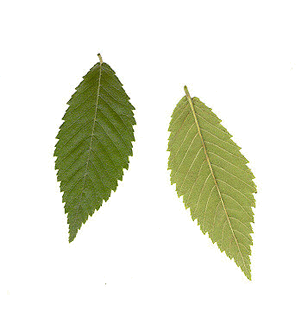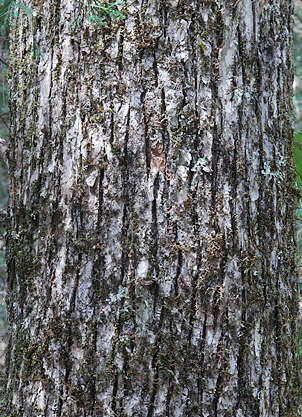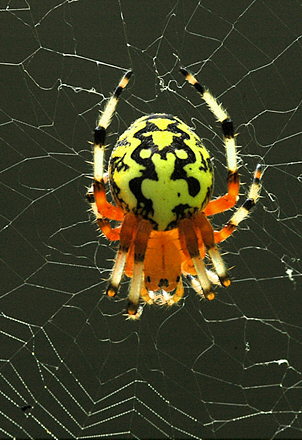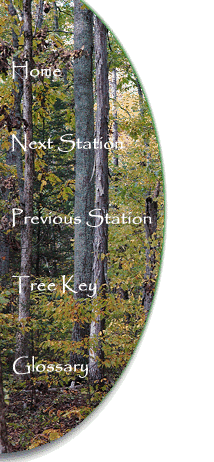| |
|
| |
 |
| |
Winged Elm Leaf Top & Bottom |
Identification:
The leaves are alternate,
simple and 1 inches to 3 inches long. They are
darker above than below, and the margin is
asymmetric at the base and
doubly serrate.
Compare the leaf shape
characteristics carefully to that of the Eastern Hophornbeam.
Note the alternate branching on this tree.
| |
|
 |
|
|
Winged Elm Bark |
The bark of the Winged Elm is
gray-brown, thin and smooth in young trees, with shallow fissures
and long, narrow scaly ridges.
The twigs of the Winged Elm are
gray-brown to red-brown and smooth, with orange
lenticels.
They often have the
corky wings
that give this tree its common name.
Other Uses
and Lore:
The wood of this tree is hard, strong and
close-grained. It has been used for table legs and tool handles.
In times past the inner bark was made into a rope for fastening the
covers of cotton bales.
Many songbirds eat the samaras of the winged elm and
nest among its branches. Deer browse the foliage.
Butterflies
that use it as a host plant include the Comma, the Question Mark and
the Mourning Cloak.
The
Trail From Station Nine to Station Ten
 |
| Marbled Orb
Weaver |
The trail is
relatively flat from Station Nine to the river overlook. In
late summer, look for spider webs along the trail. Often you
can get very good looks at beautiful spiders like this Marbled Orb
Weaver. In autumn many orange eggs are laid in a flattened
white cocoon-like egg sac. This sac is attached to a nearby
leaf. Station Ten will on the right at a fork in the trail.
You will want to take the right fork to continue to the river
overlook.
|

